($54, Miguel Torres USA): 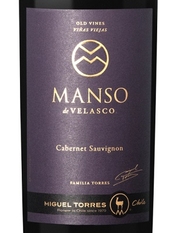 Named for Manso de Velasco, the Governor of Chile during colonial times and the founder of the city of Curicó, this Cabernet Sauvignon comes exclusively from 100-plus year-old vines grown on the estate of the same name. … Read more
Named for Manso de Velasco, the Governor of Chile during colonial times and the founder of the city of Curicó, this Cabernet Sauvignon comes exclusively from 100-plus year-old vines grown on the estate of the same name. … Read more
Category Archives: Reviews
Miguel Torres, Central Valley (Chile) Cabernet Sauvignon “Las Mulas” Reserva 2019
($14, Miguel Torres USA):  Miguel Torres, one of Spain’s leading producers, expanded to Chile in 1979, becoming the first foreign investment in that country’s wine industry, according to their website. Torres introduced the Las Mulas line — the wines are made entirely from organic grapes — in 2010. … Read more
Miguel Torres, one of Spain’s leading producers, expanded to Chile in 1979, becoming the first foreign investment in that country’s wine industry, according to their website. Torres introduced the Las Mulas line — the wines are made entirely from organic grapes — in 2010. … Read more
Dry Creek Vineyard, Dry Creek Valley (Sonoma County, California) Old Vine Zinfandel 2018
($38):  Full disclosure: Zinfandel and Petite Sirah, which comprise 99 percent of the blend of this wine, are among my least favorite varieties because, when converted to wine, they often display power and little else. So, imagine my surprise when I discovered how well Dry Creek Vineyard manages them. … Read more
Full disclosure: Zinfandel and Petite Sirah, which comprise 99 percent of the blend of this wine, are among my least favorite varieties because, when converted to wine, they often display power and little else. So, imagine my surprise when I discovered how well Dry Creek Vineyard manages them. … Read more
Col d’Orcia, Brunello di Montalcino DOCG (Tuscany, Italy) 2016
($45, Taub Family Selections):  Col d’Orcia, one of the largest producers of Brunello di Montalcino, has proven, time and time again, that quality and quantity can go together. They did it again with their positively stellar 2016 Brunello. The 2016 vintage is outstanding throughout Tuscany.… Read more
Col d’Orcia, one of the largest producers of Brunello di Montalcino, has proven, time and time again, that quality and quantity can go together. They did it again with their positively stellar 2016 Brunello. The 2016 vintage is outstanding throughout Tuscany.… Read more
Gary Farrell Vineyards & Winery, Russian River Valley (Sonoma County, California) Pinot Noir “Russian River Selection” 2018
($45):  Gary Farrell is a winery known for brilliant single vineyard Pinot Noirs, which show that terroir is alive and well in California. This one, however, is a blend to represent the Russian River Valley in general — and it does. … Read more
Gary Farrell is a winery known for brilliant single vineyard Pinot Noirs, which show that terroir is alive and well in California. This one, however, is a blend to represent the Russian River Valley in general — and it does. … Read more
Sullivan Rutherford Estate, Napa Valley (California) Cabernet Sauvignon “Coeur de Vigne” 2017
($90):  Though Coeur de Vigne might suggest highly selected grapes and an over-extracted precious wine, this one is not. Though more immediately appealing — slightly softer and rounder — than their Estate Bottling (previously reviewed), it displays the classic savory-ripe dark fruit mixture for which top Napa Valley Cabernet is known. … Read more
Though Coeur de Vigne might suggest highly selected grapes and an over-extracted precious wine, this one is not. Though more immediately appealing — slightly softer and rounder — than their Estate Bottling (previously reviewed), it displays the classic savory-ripe dark fruit mixture for which top Napa Valley Cabernet is known. … Read more
Sequoia Grove, Napa Valley (California) Cabernet Sauvignon 2017
($48):  Lovely savory, olive-like notes balance the dark fruitiness of this big bold and broad Cabernet. Fine tannins provide structure without being astringent or intrusive. There’s a delightful hint of bitterness in the finish to emphasize this is not a “fruit bomb.” … Read more
Lovely savory, olive-like notes balance the dark fruitiness of this big bold and broad Cabernet. Fine tannins provide structure without being astringent or intrusive. There’s a delightful hint of bitterness in the finish to emphasize this is not a “fruit bomb.” … Read more
Michèle Capdepon, Blanquette de Limoux (Languedoc, France) Brut NV
($20, Wines Of France):  The Languedoc region of France is a treasure trove for wines, from those labeled Indication Géographique Protégée (IGP, or what was formerly Vin de Pays) to more prestigious ones that carry an appellation, such as this one.… Read more
The Languedoc region of France is a treasure trove for wines, from those labeled Indication Géographique Protégée (IGP, or what was formerly Vin de Pays) to more prestigious ones that carry an appellation, such as this one.… Read more
Jean-Marc Brocard, Chablis (Burgundy, France) “Ste. Claire” 2019
($24):  Jean-Marc Brocard, one of my favorite producers in Chablis, consistently makes a stunning array of wines. I can’t remember a wine from them that failed to impress. The family-run estate farms organically and shuns the use of new oak barrels because they want to emphasize the character the site imparts to the grapes. … Read more
Jean-Marc Brocard, one of my favorite producers in Chablis, consistently makes a stunning array of wines. I can’t remember a wine from them that failed to impress. The family-run estate farms organically and shuns the use of new oak barrels because they want to emphasize the character the site imparts to the grapes. … Read more
Bodega Trivento, Mendoza (Argentina) Malbec Reserve 2019
($12):  This lighter styled Malbec will appeal especially to those who find most Malbecs too overpowering or heavy. Still, it has good concentration despite its lack of muscularity. Savory, smoke-y undertones balance the dark fruity profile. Suave, mild tannins mean this is a wine to enjoy now. … Read more
This lighter styled Malbec will appeal especially to those who find most Malbecs too overpowering or heavy. Still, it has good concentration despite its lack of muscularity. Savory, smoke-y undertones balance the dark fruity profile. Suave, mild tannins mean this is a wine to enjoy now. … Read more
Raeburn Winery, Russian River Valley (Sonoma County, California) Pinot Noir 2019
($25):  A whiff of savory notes peek out from the ripe Sonoma fruit lending intrigue to this Pinot Noir. A touch of heat and sweetness in the finish reflects the stated 14.5 percent alcohol. Mild tannins allow you to enjoy it with grilled salmon.… Read more
A whiff of savory notes peek out from the ripe Sonoma fruit lending intrigue to this Pinot Noir. A touch of heat and sweetness in the finish reflects the stated 14.5 percent alcohol. Mild tannins allow you to enjoy it with grilled salmon.… Read more
Dry Creek Vineyard, Dry Creek Valley (Sonoma County, California) Meritage 2018
($32):  Dry Creek Vineyard, still owned by the Stare family, is approaching their half-century mark of making wine in Dry Creek Valley. Though I’ve always been a fan of their balanced wines, I think they are just getting better and better. … Read more
Dry Creek Vineyard, still owned by the Stare family, is approaching their half-century mark of making wine in Dry Creek Valley. Though I’ve always been a fan of their balanced wines, I think they are just getting better and better. … Read more
Ai Galli, Delle Venezie DOC (Italy) Pinot Grigio 2019
($12): 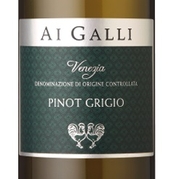 Ai Galli also shows their talents with a bargain-priced “entry-level,” as they call it, Pinot Grigio. Fresh and floral wine, it has a captivating delicacy. This clean crisp Pinot Grigio finishes with a welcoming hint of bitterness. And look at the price. … Read more
Ai Galli also shows their talents with a bargain-priced “entry-level,” as they call it, Pinot Grigio. Fresh and floral wine, it has a captivating delicacy. This clean crisp Pinot Grigio finishes with a welcoming hint of bitterness. And look at the price. … Read more
Cantina Kaltern, Kalterersee Classico Superiore DOC (Alto Adige, Italy) “Quintessenz” 2017
($34, Enotec Imports, Inc):  Since this DOC is not well-known to most Americans (I had to run to the reference books), a little background. The DOC is named for a large lake that lies within Alto Adige. “Classico,” as usual in the Italian DOC nomenclature, refers to the original or heart of the area. … Read more
Since this DOC is not well-known to most Americans (I had to run to the reference books), a little background. The DOC is named for a large lake that lies within Alto Adige. “Classico,” as usual in the Italian DOC nomenclature, refers to the original or heart of the area. … Read more
Celli, Romagna Albana Secco DOCG (Italy) “I Croppi” 2019
($20):  The Albana grape is uniquely suited to the Bertinoro subregion of Romagna where Celli is located thanks to the calcium rich soil, locally known as spungone, a vestige of its underwater location 3.5 million years ago. Celli’s 2019 I Croppi is outstanding. … Read more
The Albana grape is uniquely suited to the Bertinoro subregion of Romagna where Celli is located thanks to the calcium rich soil, locally known as spungone, a vestige of its underwater location 3.5 million years ago. Celli’s 2019 I Croppi is outstanding. … Read more
Domaine Antonin Guyon, Delle Venezie DOC (Italy) Pinot Grigio 2019
($12):  Ai Galli also shows their talents with a bargain-priced “entry-level,” as they call it, Pinot Grigio. Fresh and floral wine, it has a captivating delicacy. This clean crisp Pinot Grigio finishes with a welcoming hint of bitterness. And look at the price. … Read more
Ai Galli also shows their talents with a bargain-priced “entry-level,” as they call it, Pinot Grigio. Fresh and floral wine, it has a captivating delicacy. This clean crisp Pinot Grigio finishes with a welcoming hint of bitterness. And look at the price. … Read more
Merry Edwards Winery, Russian River Valley (Sonoma County, California) Sauvignon Blanc 2018
($38):  Merry Edwards, one of California top Pinot Noir producers, is also making a name for herself with Sauvignon Blanc. Edwards’ working with Sauvignon Blanc should come as no surprise since she was responsible for the legendary ones from Matanzas Creek when she was the winemaker there. … Read more
Merry Edwards, one of California top Pinot Noir producers, is also making a name for herself with Sauvignon Blanc. Edwards’ working with Sauvignon Blanc should come as no surprise since she was responsible for the legendary ones from Matanzas Creek when she was the winemaker there. … Read more
Thierry Germain / Domaine des Roches Neuves, Saumur Champigny (Loire Valley, France) Clos de L’Échelier 2018
($70, Vineyard Road):  Thierry Germain at Domaine des Roches Neuves is one of the Loire’s young superstars. He makes a range of reds from Cabernet Franc, as is the tradition in Saumur Champigny. This one, one of his top cuvées, comes from a 4.5-acre terraced plot of 70-year old vines. … Read more
Thierry Germain at Domaine des Roches Neuves is one of the Loire’s young superstars. He makes a range of reds from Cabernet Franc, as is the tradition in Saumur Champigny. This one, one of his top cuvées, comes from a 4.5-acre terraced plot of 70-year old vines. … Read more
Château de Corcelles, Vin de France (France) Gamay “Les Copains d’Abord” 2018
($18, Seaview Imports):  Château de Corcelles, an historic property located just east of Villé-Morgon, produces a range of Beaujolais. They also produce this wine, entirely from Gamay, presumably, from vines that are located just outside of the Beaujolais delimited zone. Though it has the charm of Beaujolais, they can’t legally call it that. … Read more
Château de Corcelles, an historic property located just east of Villé-Morgon, produces a range of Beaujolais. They also produce this wine, entirely from Gamay, presumably, from vines that are located just outside of the Beaujolais delimited zone. Though it has the charm of Beaujolais, they can’t legally call it that. … Read more
Louis Max, Côtes-du-Rhône (Rhône Valley, France) 2018
($15, HB Wine Imports): 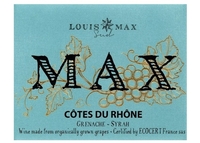 As this wine shows, wines from the broad Côtes du Rhône appellation can provide an excellent pleasure-to-price ratio. A balanced and lively Grenache and Syrah blend, it has good concentration and the oomph you would expect from the south of France. … Read more
As this wine shows, wines from the broad Côtes du Rhône appellation can provide an excellent pleasure-to-price ratio. A balanced and lively Grenache and Syrah blend, it has good concentration and the oomph you would expect from the south of France. … Read more
Château de la Maltroye, Chassagne-Montrachet 1er Cru (Burgundy, France) Clos du Château de la Maltroye 2018
($96, Jeanne-Marie de Champs Selection):  Château de la Maltroye, a consistently reliable producer of both red and white wines, succeeded admirably in 2018. This white, from their monopole, exhibits the broader and weightier minerality characteristic of Chassagne, compared to Puligny. Good acidity balances and amplifies its charms. … Read more
Château de la Maltroye, a consistently reliable producer of both red and white wines, succeeded admirably in 2018. This white, from their monopole, exhibits the broader and weightier minerality characteristic of Chassagne, compared to Puligny. Good acidity balances and amplifies its charms. … Read more
Gallina de Piel, Empordà (Catalonia, Spain) “Roca del Crit” 2018
($30, Bluest Sky Group):  Roca del Crit (screaming rock) was a place behind El Bulli where, the story goes, David Seijas, the sommelier at that famed restaurant, could escape and scream to relieve tension from work. Roca del Crit is more robust than its stable mate, Mimetic, with a focus more on minerals and earth. … Read more
Roca del Crit (screaming rock) was a place behind El Bulli where, the story goes, David Seijas, the sommelier at that famed restaurant, could escape and scream to relieve tension from work. Roca del Crit is more robust than its stable mate, Mimetic, with a focus more on minerals and earth. … Read more
Gallina de Piel, Calatayud (Aragón, Spain) “Mimetic” 2018
($15, Bluest Sky Group):  Though I’ve given some background on the Gallina de Piel wines previously, it bears repeating because their wines represent great bargains. So, it’s worth hearing the story again. Two sommeliers, one of whom, David Seijas, worked at El Bulli, named the best restaurant in the world five times by Restaurant magazine, founded Gallina de Piel. … Read more
Though I’ve given some background on the Gallina de Piel wines previously, it bears repeating because their wines represent great bargains. So, it’s worth hearing the story again. Two sommeliers, one of whom, David Seijas, worked at El Bulli, named the best restaurant in the world five times by Restaurant magazine, founded Gallina de Piel. … Read more
Herdade do Esporão, Vinho Regional Alentejano (Portugal) “Monte Velho” 2019
($9, Now Wine Imports): 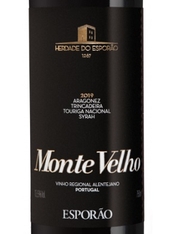 Looking for value? Look no further than this charming and substantial wine. Weighing in at a modest 13.5 percent-stated alcohol, it delivers dark fruit flavors intertwined with spicy and earthy ones. Suave tannins allow immediate enjoyment. Good acidity keeps it fresh and lively. … Read more
Looking for value? Look no further than this charming and substantial wine. Weighing in at a modest 13.5 percent-stated alcohol, it delivers dark fruit flavors intertwined with spicy and earthy ones. Suave tannins allow immediate enjoyment. Good acidity keeps it fresh and lively. … Read more
Cantina Sanpaolo, Greco di Tufo DOCG (Campania, Italy) 2017
($20, Enotec Imports, Inc):  Greco di Tufo, one of Italy’s premier white grapes, is rarely found outside its home in Campania. Sanpaolo’s is an excellent example, full-bodied, yet crisp. It is mineral-infused, reflecting the lava-like residue of Vesuvius. Its acidity imbues it with energy and magnifies its charms. … Read more
Greco di Tufo, one of Italy’s premier white grapes, is rarely found outside its home in Campania. Sanpaolo’s is an excellent example, full-bodied, yet crisp. It is mineral-infused, reflecting the lava-like residue of Vesuvius. Its acidity imbues it with energy and magnifies its charms. … Read more
Louis Latour, Corton-Charlemagne Grand Cru, Burgundy, 1978
 Drinking Window: 2021 – 2021
Drinking Window: 2021 – 2021Louis Latour, Corton-Charlemagne Grand Cru, Burgundy, 1979
 Drinking Window: 2021 – 2021
Drinking Window: 2021 – 2021Louis Latour, Corton-Charlemagne Grand Cru, Burgundy, 1982
 Drinking Window: 2021 – 2021
Drinking Window: 2021 – 2021Louis Latour, Corton-Charlemagne Grand Cru, Burgundy, 1989
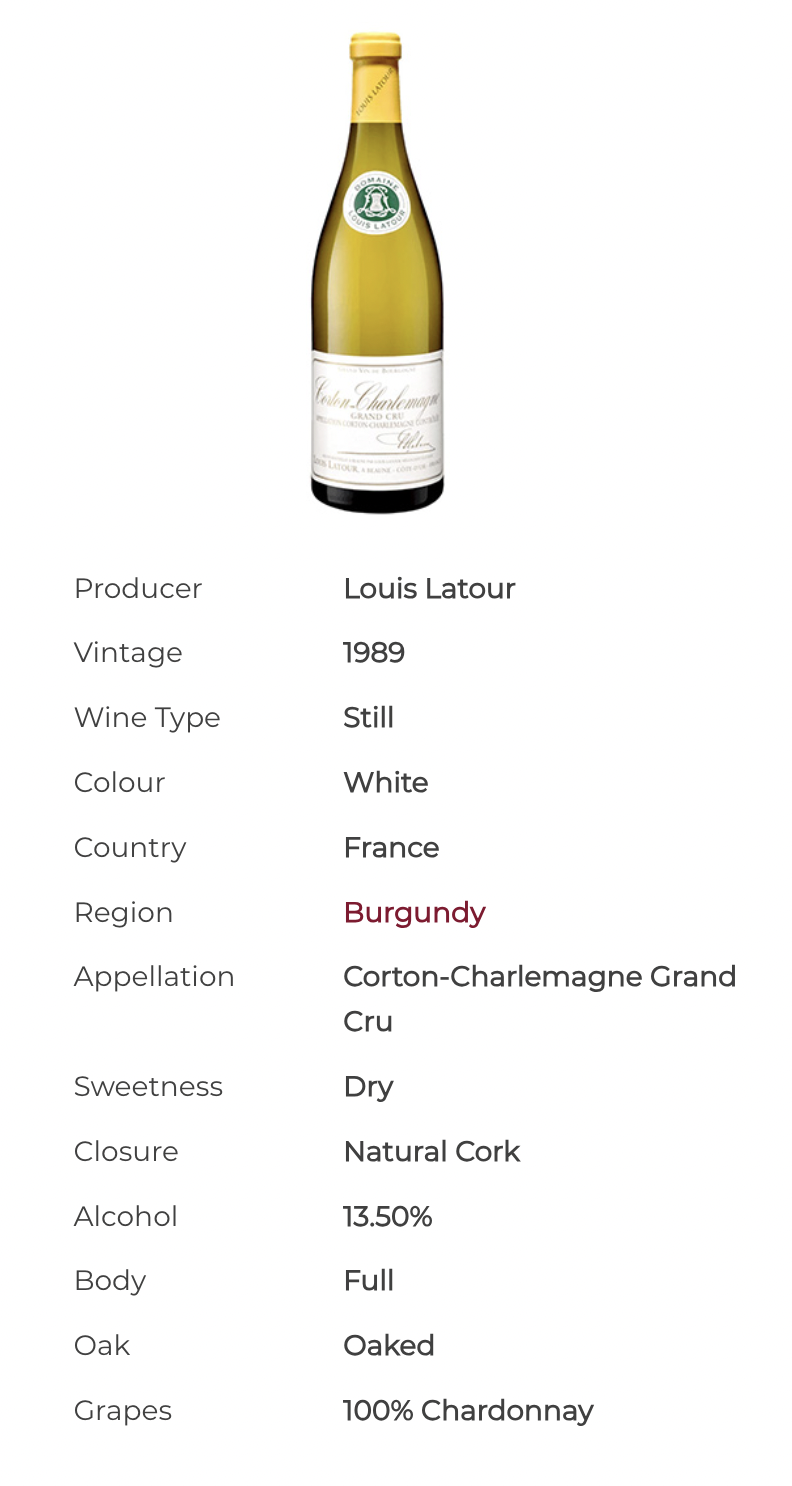 Drinking Window: 2021 – 2025
Drinking Window: 2021 – 2025Louis Latour, Corton-Charlemagne Grand Cru, Burgundy, 1990
 Drinking Window: 2021 – 2025
Drinking Window: 2021 – 2025Louis Latour, Corton-Charlemagne Grand Cru, Burgundy, 1996
 Drinking Window: 2021 – 2022
Drinking Window: 2021 – 2022Louis Latour, Corton-Charlemagne Grand Cru, Burgundy, 1997
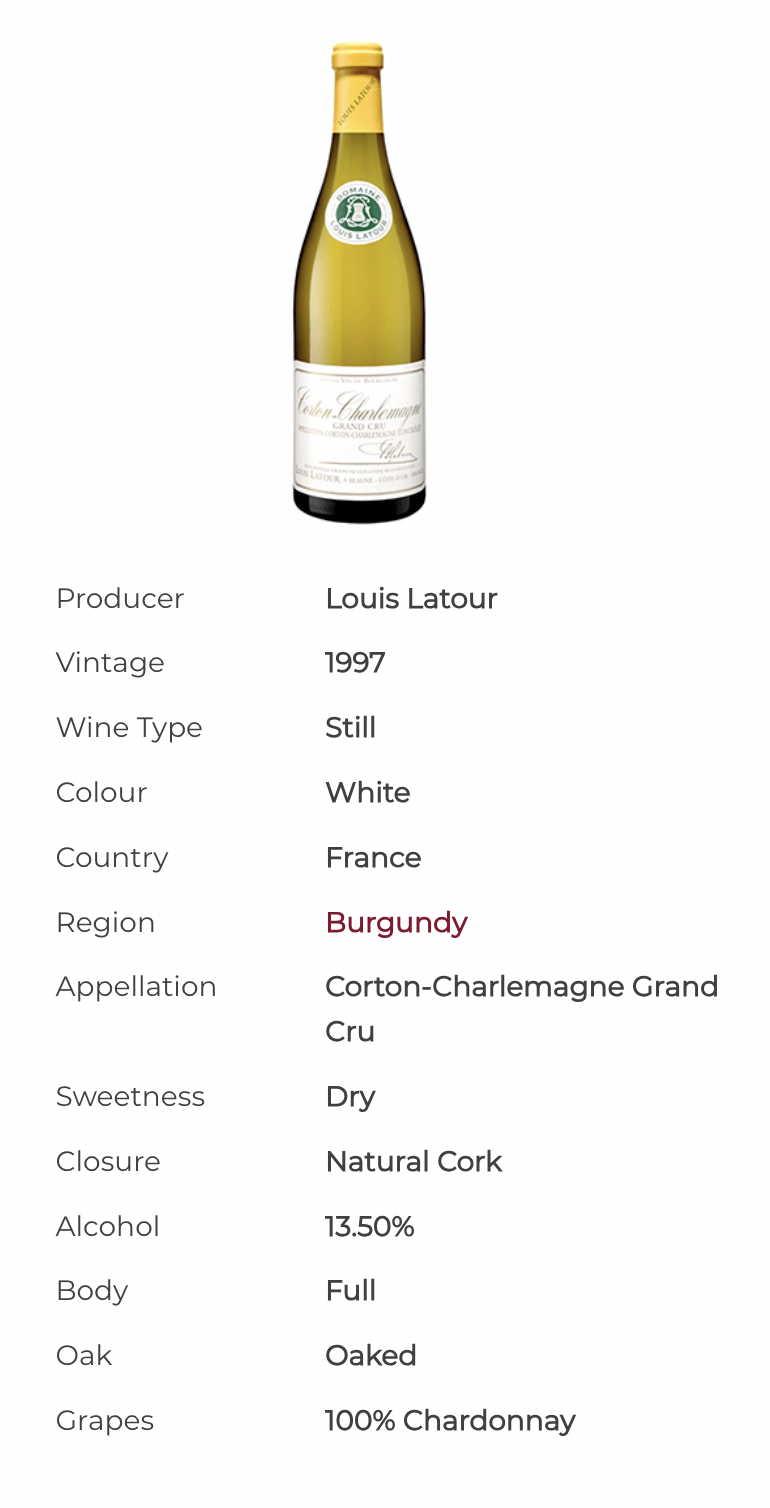
Louis Latour, Corton-Charlemagne Grand Cru, Burgundy, 1999
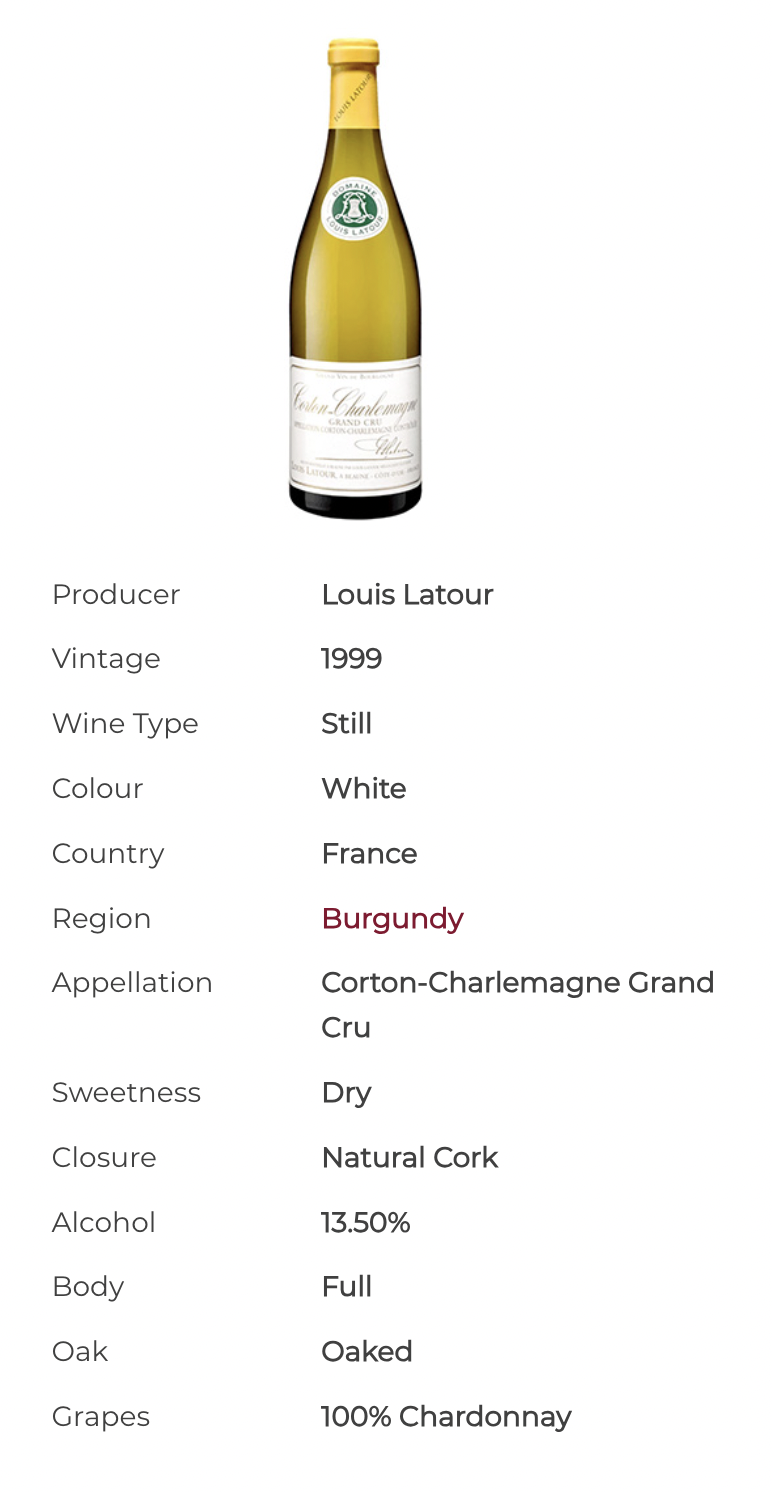 Drinking Window: 2021 – 2028
Drinking Window: 2021 – 2028Louis Latour, Corton-Charlemagne Grand Cru, Burgundy, 2002
 Drinking Window: 2021 – 2023
Drinking Window: 2021 – 2023Louis Latour, Corton-Charlemagne Grand Cru, Burgundy, 2004
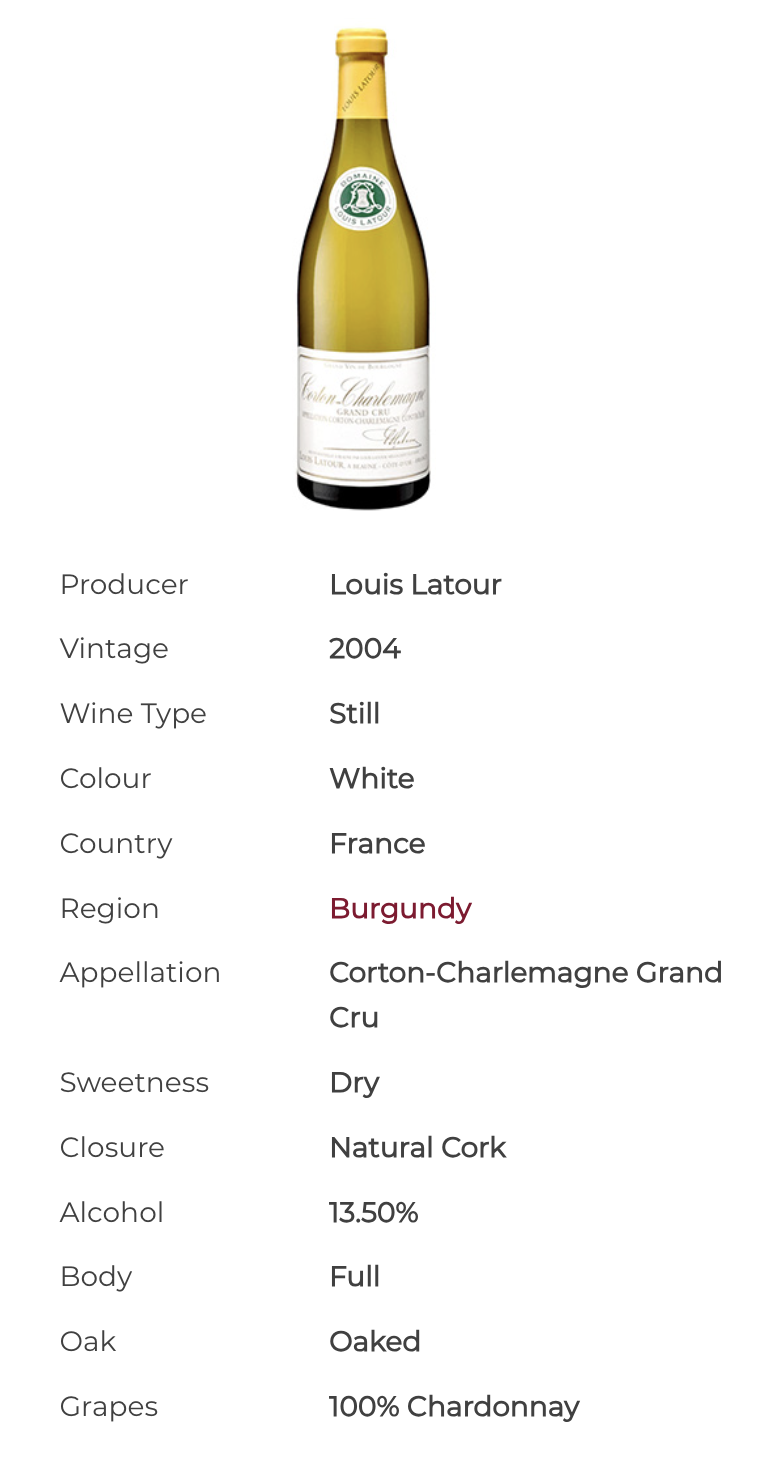 Drinking Window: 2021 – 2031
Drinking Window: 2021 – 2031Louis Latour, Corton-Charlemagne Grand Cru, Burgundy, 2005
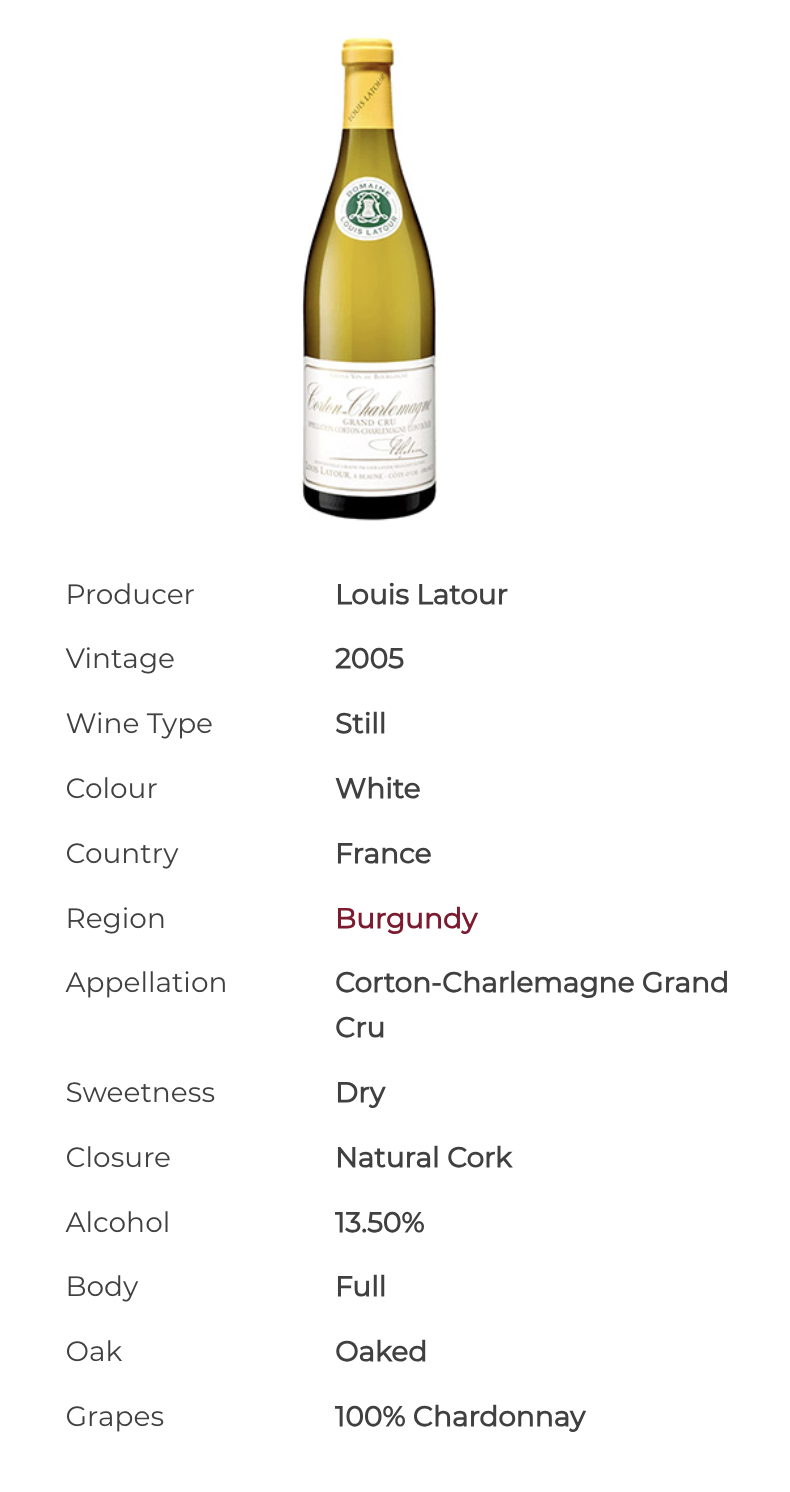 Drinking Window: 2021 – 2026
Drinking Window: 2021 – 2026Louis Latour, Corton-Charlemagne Grand Cru, Burgundy, 2008
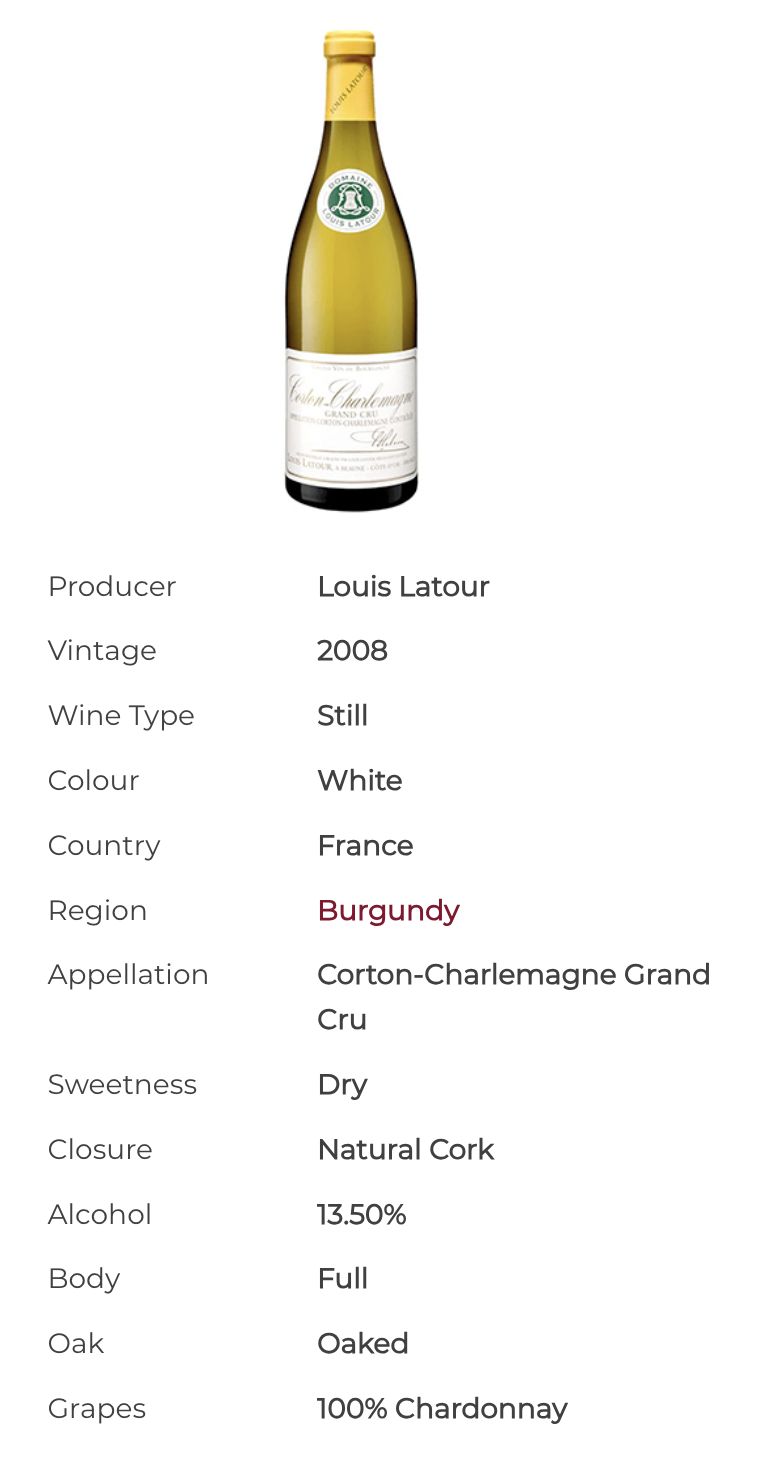 Drinking Window: 2021 – 2031
Drinking Window: 2021 – 2031Louis Latour, Corton-Charlemagne Grand Cru, Burgundy, 2009
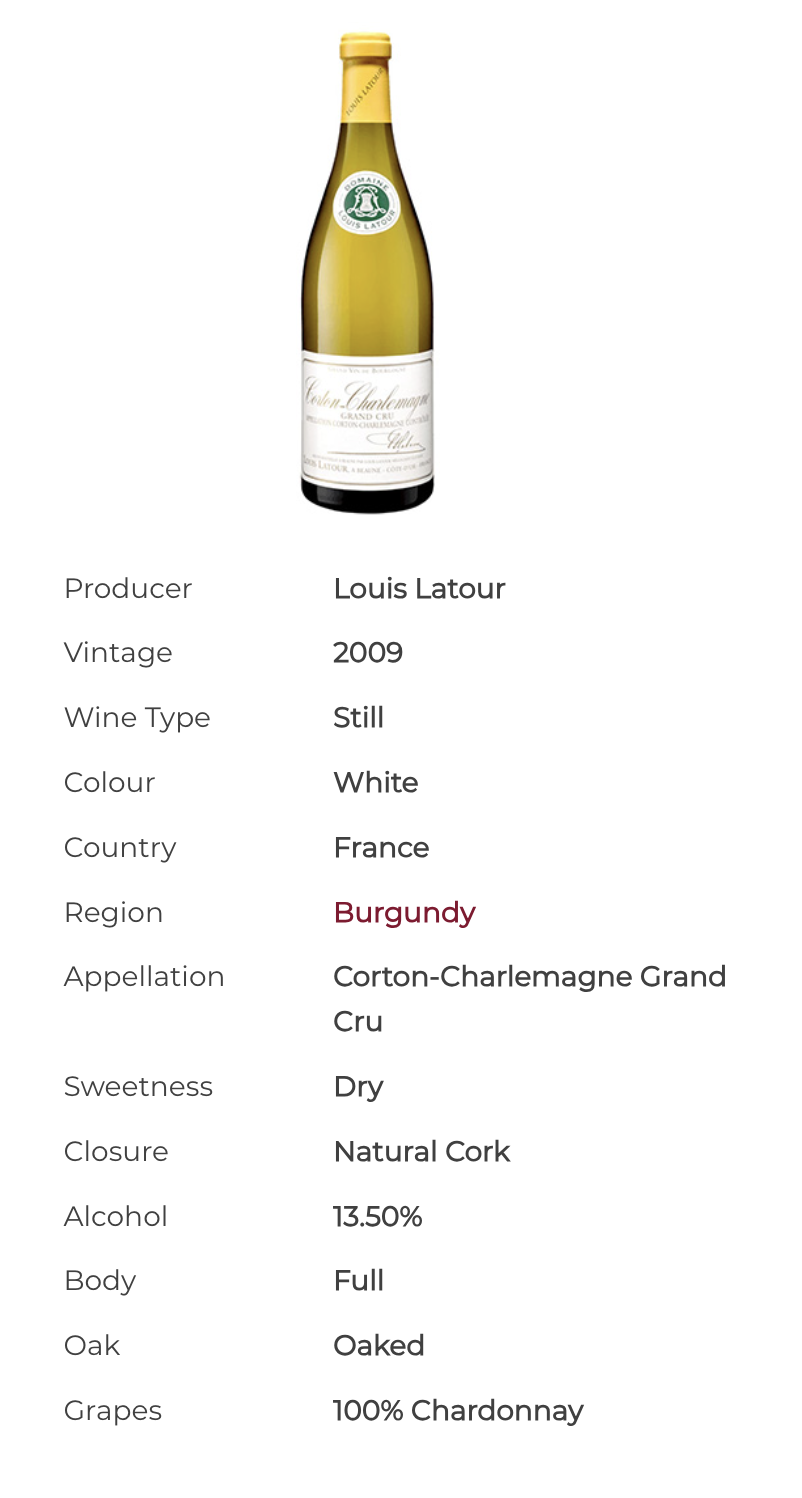 Drinking Window: 2021 – 2028
Drinking Window: 2021 – 2028Louis Latour, Corton-Charlemagne Grand Cru, Burgundy, 2010
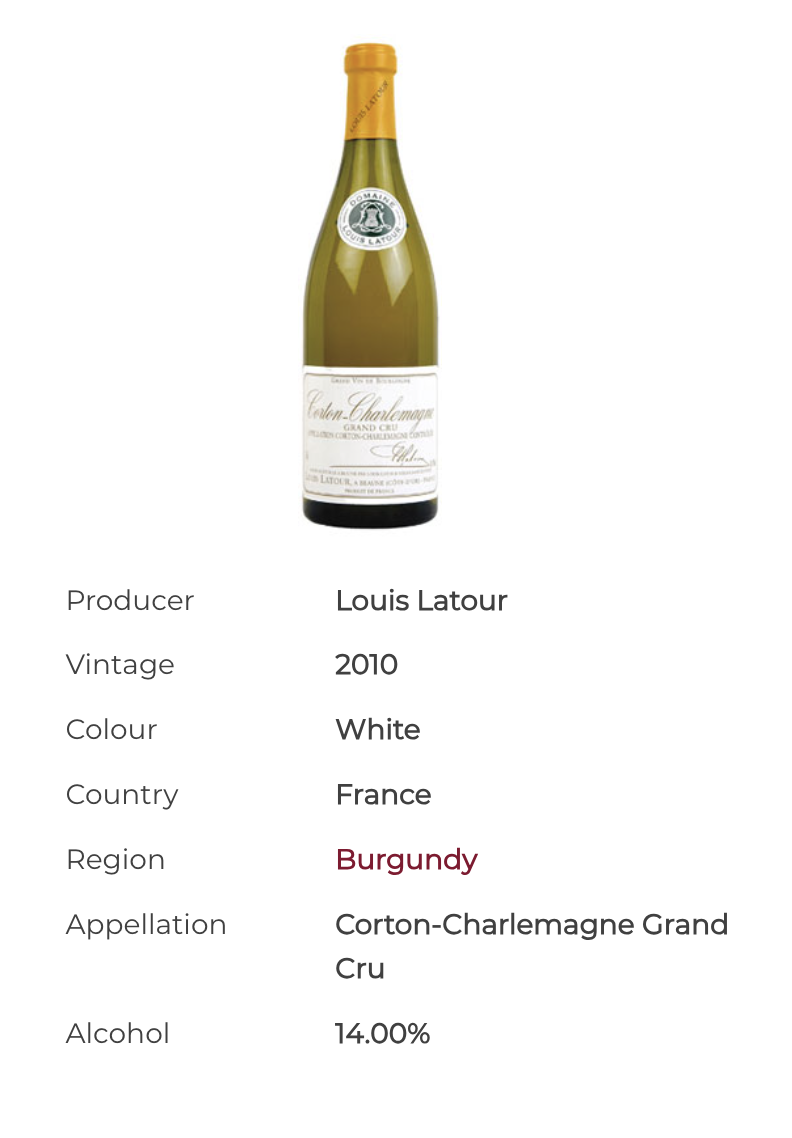 Drinking Window: 2021 – 2031
Drinking Window: 2021 – 2031Louis Latour, Corton-Charlemagne Grand Cru, Burgundy, 2011
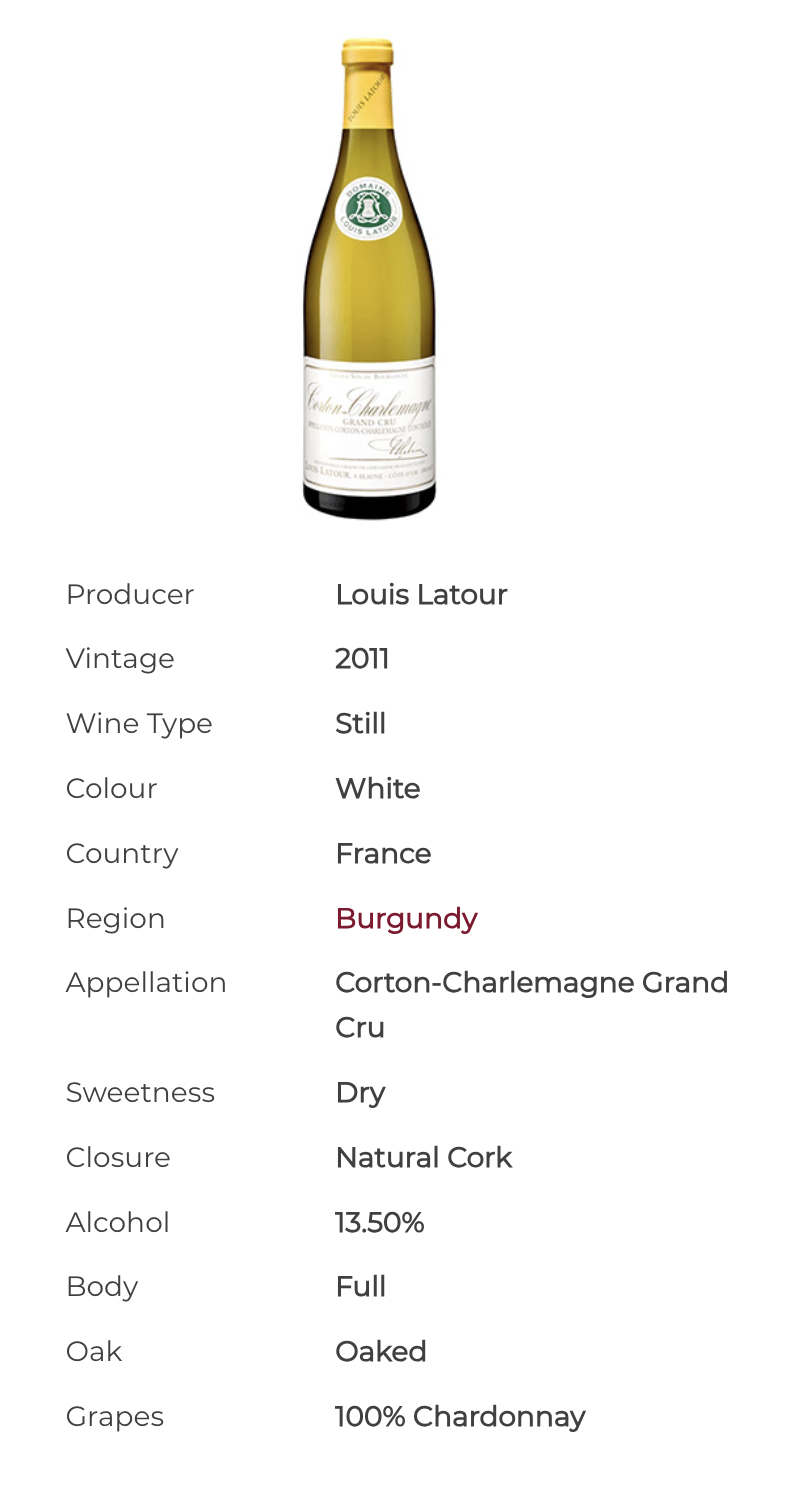 Drinking Window: 2021 – 2025
Drinking Window: 2021 – 2025Louis Latour, Corton-Charlemagne Grand Cru, Burgundy, 2013
 Drinking Window: 2022 – 2027
Drinking Window: 2022 – 2027Louis Latour, Corton-Charlemagne Grand Cru, Burgundy, 2015
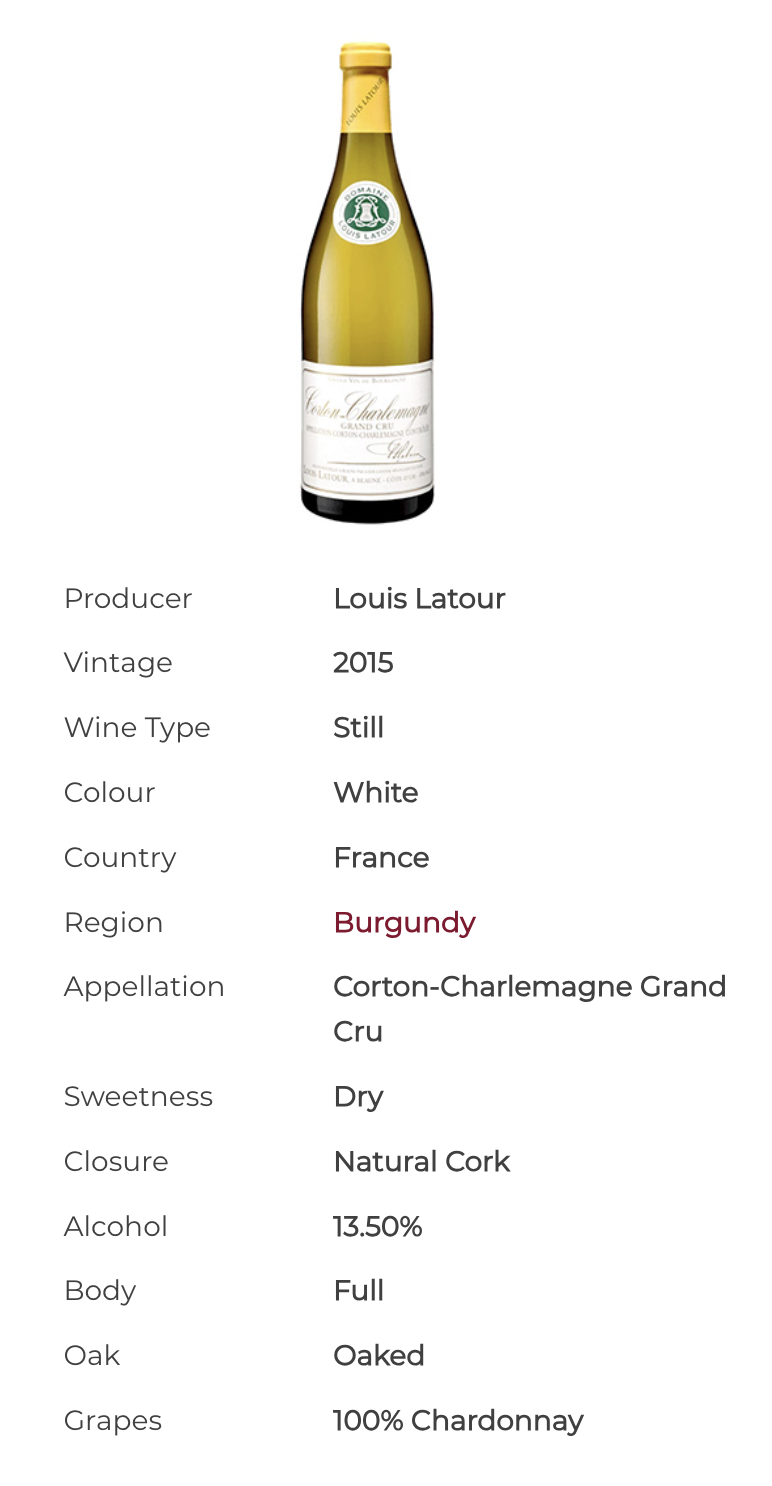 Drinking Window: 2025 – 2030
Drinking Window: 2025 – 2030Louis Latour, Corton-Charlemagne Grand Cru, Burgundy, 2017
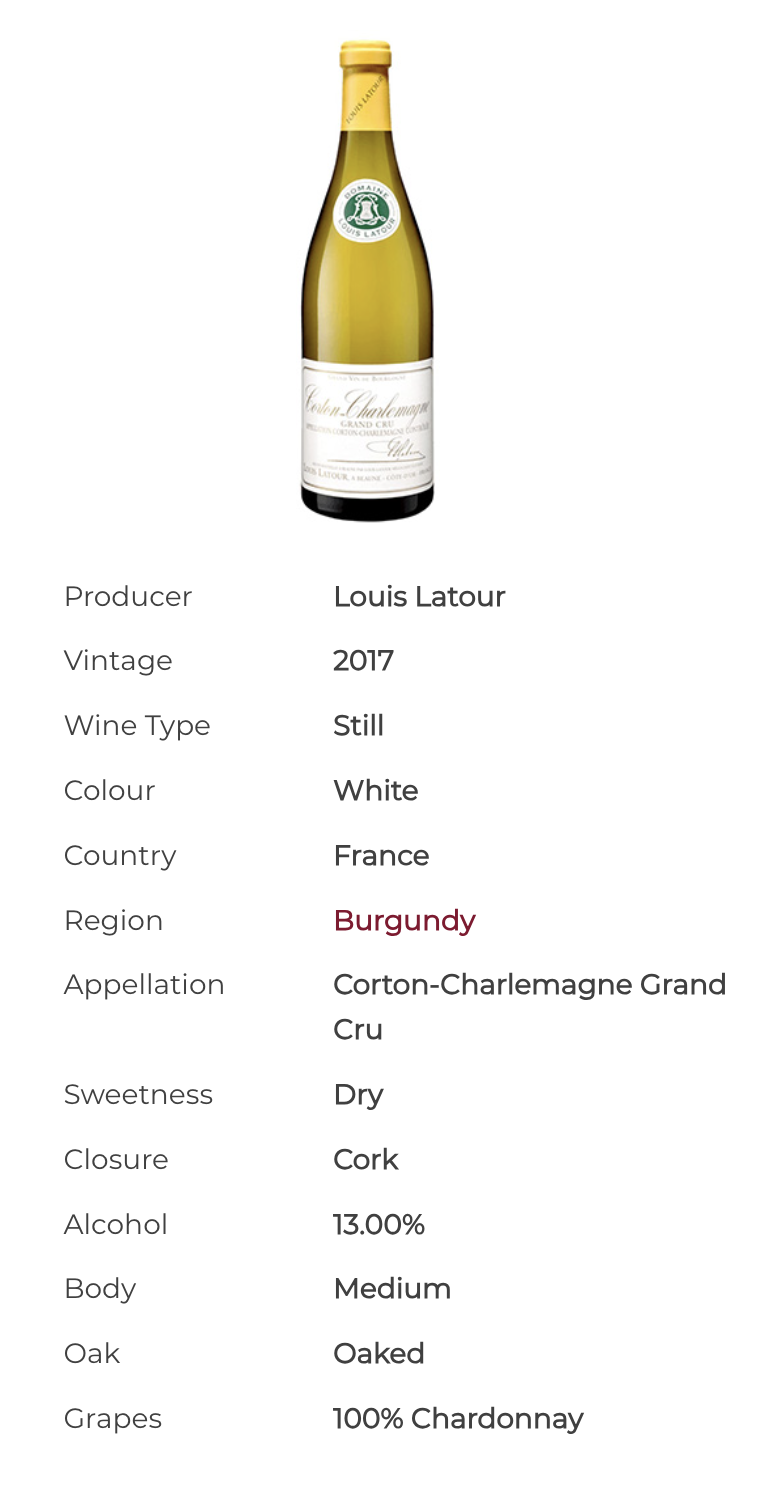 Drinking Window: 2027 – 2040
Drinking Window: 2027 – 2040Louis Latour, Corton-Charlemagne Grand Cru, Burgundy, 2018
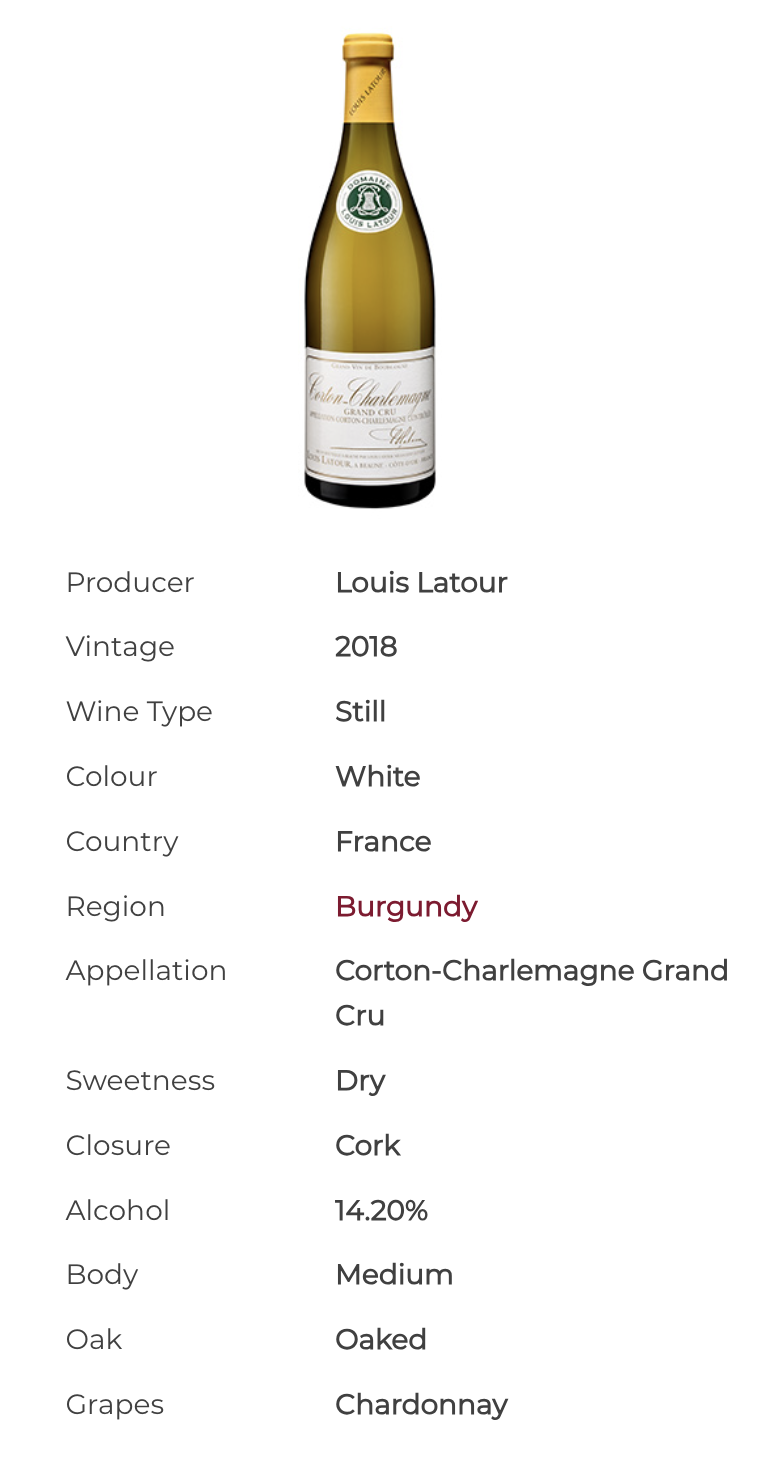 Drinking Window: 2026 – 2036
Drinking Window: 2026 – 2036Il Poggiolo, Brunello di Montalcino DOCG (Tuscany, Italy) 2015
($70, Enotec Imports, Inc):  A paradox, the traditionally framed Il Poggiolo Brunello marries the ripeness of the 2015 vintage with a lovely austerity. Not a blowsy wine, it combines dark cherry-like fruit with a core of minerals. Importantly, especially for the vintage, it has great acidity, which imparts a wonderful vivacity to the wine. … Read more
A paradox, the traditionally framed Il Poggiolo Brunello marries the ripeness of the 2015 vintage with a lovely austerity. Not a blowsy wine, it combines dark cherry-like fruit with a core of minerals. Importantly, especially for the vintage, it has great acidity, which imparts a wonderful vivacity to the wine. … Read more
Rodney Strong Vineyards, Chalk Hill, Sonoma County (California) Chardonnay 2018
($22):  It is not surprising that Rodney Strong’s Chalk Hill Chardonnay continues to be an outstanding wine. If anyone knows where to grow Chardonnay in Sonoma, it’s Rodney Strong. He was bottling a Chardonnay under that label before there even was a Chalk Hill AVA. … Read more
It is not surprising that Rodney Strong’s Chalk Hill Chardonnay continues to be an outstanding wine. If anyone knows where to grow Chardonnay in Sonoma, it’s Rodney Strong. He was bottling a Chardonnay under that label before there even was a Chalk Hill AVA. … Read more
Anselmo Mendes, Monção e Melgaço (Vinho Verde, Portugal) Alvarinho “Muros Antigos” 2019
($15): 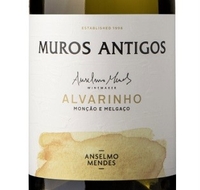 Vinho Verde, Portugal’s largest appellation, lies in that country’s northwest corner, bordering Spain. It’s known for racy high-acid wines. Some, sadly, provide little more than acidity. Enter Anselmo Mendes. His Muros Antigos delivers the mouth-cleansing zippy edge, but in addition there’s a lovely floral quality and an engaging lime-like quality. … Read more
Vinho Verde, Portugal’s largest appellation, lies in that country’s northwest corner, bordering Spain. It’s known for racy high-acid wines. Some, sadly, provide little more than acidity. Enter Anselmo Mendes. His Muros Antigos delivers the mouth-cleansing zippy edge, but in addition there’s a lovely floral quality and an engaging lime-like quality. … Read more
Anselmo Mendes, Monção e Melgaço (Vinho Verde, Portugal) “Alvarinho Contacto” 2019
($19): 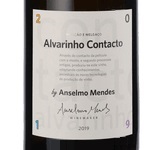 Monção e Melgaço, one of the nine official sub-regions of Vinho Verde, lies on the southern border of Galicia, the Spanish province that occupies the northwest corner of the Iberian Peninsula. The Alvarinho grape reigns here. Mendes is a new wave producer aiming to show what can be done with this grape in this sub-region, announcing his wines with a bottle engraved with the name of sub-region, the grape, as well as his name. … Read more
Monção e Melgaço, one of the nine official sub-regions of Vinho Verde, lies on the southern border of Galicia, the Spanish province that occupies the northwest corner of the Iberian Peninsula. The Alvarinho grape reigns here. Mendes is a new wave producer aiming to show what can be done with this grape in this sub-region, announcing his wines with a bottle engraved with the name of sub-region, the grape, as well as his name. … Read more
Donnafugata, Terre Siciliane IGT (Sicily, Italy) “Tancredi” 2016
($39, Folio Fine Wine Partners):  While Donnafugata maintains a traditional focus on indigenous Sicilian grapes, such as Nero d’Avola, they also have planted international ones, such as Cabernet Sauvignon, and unusual ones, such as Tannat. Those three grapes comprise the majority of the blend of Tancredi. … Read more
While Donnafugata maintains a traditional focus on indigenous Sicilian grapes, such as Nero d’Avola, they also have planted international ones, such as Cabernet Sauvignon, and unusual ones, such as Tannat. Those three grapes comprise the majority of the blend of Tancredi. … Read more
Donnafugata, Cerasuolo di Vittoria DOCG (Sicily, Italy) “Floramundi” 2017
($30, Folio Fine Wine Partners):  Cerasuolo di Vittoria, located in southeastern Sicily, is that island’s only DOCG wine. Regulations require that Nero d’Avola comprise at least 50, but no more than 70, percent of the blend. Frappato fills out the blend. … Read more
Cerasuolo di Vittoria, located in southeastern Sicily, is that island’s only DOCG wine. Regulations require that Nero d’Avola comprise at least 50, but no more than 70, percent of the blend. Frappato fills out the blend. … Read more
